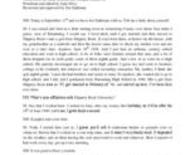- Title
- Special education teacher job satisfaction
- Abstract
-
Special Education Teacher (SET) job satisfaction and workplace commitment have long remained an elusive goal for many school communities and administrators. Workplace stress and burnout have burdened the role since its inception in 1975, leading to significantly more...
Show moreSpecial Education Teacher (SET) job satisfaction and workplace commitment have long remained an elusive goal for many school communities and administrators. Workplace stress and burnout have burdened the role since its inception in 1975, leading to significantly more turnover than in other teaching roles and, more generally, other fields. This turnover, and various efforts to fill SET roles with unqualified educators, negatively affect the learning and school success of over one million students with disabilities each year. This study sought to learn from the small percentage of individuals who choose to stay in the Special Education Teacher role for more than 10 years and report high job satisfaction as well as a sense of thriving at work. Utilizing a qualitative research approach, as well as positive deviance lens, this study sought to understand what school leaders may learn from highly satisfied SETs and which leadership practices and strategies may encourage SET job satisfaction. Furthermore, potential intersections between SET job satisfaction and positive organizational scholarship were examined, to best understand how the field of Positive Organizational Scholarship (POS) may, if at all, inform the role of special education administrator. The findings of this study extend beyond the intersection of POS and SET job satisfaction and suggest the addition Diversity, Equity and Inclusion initiatives into current conceptualizations of SET job satisfaction and retention.
Show less - Year Issued
- 2022
- Author
- Holden, Kerra
- Sub-title
- what can we learn from positive organizational scholarship and satisfied special educators
- Title
- Special educators' perspectives and experiences with workplace bullying
- Year Issued
- 2023
- Abstract
-
The purpose of this study was to determine K-12 special educators’ perceptions and experiences with workplace bullying. Specifically, this study focused on the experiences of educators in PSEA’s Midwestern Region. Their perceptions and experiences are presented seque...
Show moreThe purpose of this study was to determine K-12 special educators’ perceptions and experiences with workplace bullying. Specifically, this study focused on the experiences of educators in PSEA’s Midwestern Region. Their perceptions and experiences are presented sequentially, through key cruces that evolved through the interview process. The participants in the study were five special educators, in various teaching positions, and at varying points in their careers. Each participant was interviewed for approximately 30 minutes via Zoom. This interview was a semi-structured format, discussing their experiences and perceptions of workplace bullying in their K-12 special education positions. The intention of this research was to gather perspectives of the participants about the growing phenomenon of workplace bullying, thus lending itself to a phenomenological research design. From each question in the interview the researcher extrapolated key cruces through multicyclic coding analysis. Creswell (2007) and Tracy (2013) suggest involving participants in the review process to ensure the accuracy and intentions of their interview responses. Therefore, following the interviews, each participant received an electronic copy of the transcribed interview and reviewed it for precision. This goal of this study is for participants’ voices to uncover potential connections or truths to help understand the phenomenon of workplace bullying. These findings may transfer to other occupations or fields also struggling with workplace bullying. The population sample is unique to my personal experience, but the overarching goal spreads further than K-12 special education departments. The combination of cruces revealed in Chapter IV, can be grouped into four key areas for the purpose of further discussion. These provide a solid foundation for understanding the participants responses concerning their experience and perceptions on workplace bullying. The four key areas are workplace environment and administrative applications, similarities and differences between special educators and general educators, experiences with workplace bullying and social structures in the workplace, and personal reflections participants wished to share. This study concludes that workplace bullying is occurring in all five participants districts in various formats. The participants are calling for administration to assist in creating a safe, productive, and positive work environment for all building members.
Show less - Author
- Pierson-Malenky, Kristin




















